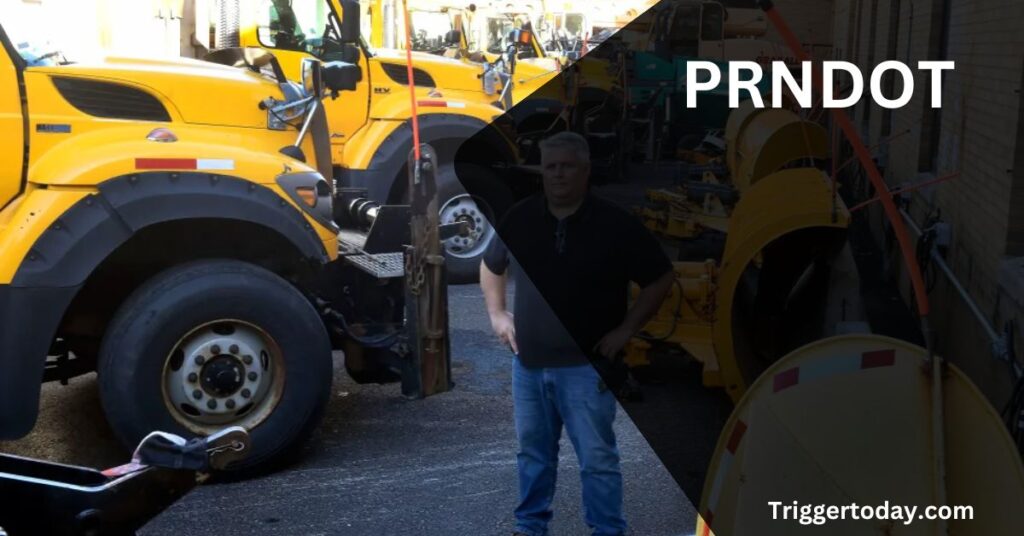PRNDOT – A Comprehensive Guide to Vehicle Operation

Discovering the PRNDOT system transformed my driving experience, making vehicle operation smooth and effortless. Each gear shift now feels intuitive and enhances my control on the road. Embracing PRNDOT has truly elevated my confidence behind the wheel.
The PRNDOT system is a crucial framework for modern vehicle operation, encompassing Park, Reverse, Neutral, Drive, Overdrive, and Throttle. Mastery of PRNDOT ensures efficient, safe, and optimized driving experiences for all vehicle owners.
We will dive deep into understanding each aspect of PRNDOT, highlighting practical tips and maintenance advice. By examining real-life applications, troubleshooting common issues, and optimizing fuel efficiency, you’ll gain a comprehensive understanding of this essential driving framework.
Introduction to PRNDOT
What is PRNDOT?
PRNDOT stands for Park, Reverse, Neutral, Drive, Overdrive, and Throttle. It represents the essential controls in automatic transmission vehicles, guiding drivers on how to operate their vehicles efficiently. Understanding PRNDOT is crucial for safe and effective vehicle management.
Importance of PRNDOT in Modern Vehicles
The PRNDOT system simplifies vehicle operation, making driving accessible to a wide range of people. Each component serves a specific purpose, ensuring that vehicles operate smoothly under various conditions. Mastery of PRNDOT enhances driving safety, performance, and overall vehicle longevity.
Park (P)
Function and Usage
The Park (P) position locks the transmission, preventing the vehicle from moving. It is used when the vehicle is stationary, such as when parking. Engaging Park ensures that the vehicle remains in place even on inclines.
Common Misconceptions
A common misconception is that Park alone will hold the vehicle on a steep incline. While Park is essential, using the parking brake in conjunction with Park is crucial for added safety.
Maintenance Tips
Regularly check the functionality of the Park gear. If the vehicle rolls while in Park, seek professional inspection immediately. Also, ensure the parking brake is in good working order to complement the Park position.
Reverse (R)
Function and Usage
The Reverse (R) position engages the reverse gear, allowing the vehicle to move backward. It is used primarily when backing out of parking spaces or maneuvering in tight areas.
Safety Precautions
Always check your surroundings before engaging Reverse. Use mirrors and backup cameras if available, and move slowly to avoid collisions. Be mindful of pedestrians and obstacles.
Troubleshooting Common Issues
If the vehicle does not engage in Reverse, it could indicate transmission issues. Low transmission fluid or mechanical problems might be the cause. Consult a mechanic for a thorough diagnosis.
Neutral (N)
Function and Usage
Neutral (N) disconnects the engine from the wheels, allowing the vehicle to roll freely. It is used during towing or when idling for extended periods.
When to Use Neutral
Use Neutral when your vehicle is being towed or when you need to push the vehicle manually. Avoid using Neutral while driving as it can reduce control over the vehicle.
Impact on Vehicle Performance
Staying in Neutral while driving downhill can be dangerous and is not recommended. It disengages engine braking, leading to potential over-speeding and loss of control.
Drive (D)
Function and Usage
Drive (D) engages the forward gears, allowing the vehicle to move forward. It is the primary mode for everyday driving.
Optimizing Fuel Efficiency
To optimize fuel efficiency, accelerate gradually and maintain a steady speed. Avoid rapid acceleration and deceleration, as these can reduce fuel efficiency.
Common Driving Scenarios
Use Drive for all regular driving scenarios, whether you’re on city streets or highways. Drive provides the necessary power and control for smooth operation.
Overdrive (O)
Function and Usage
Overdrive (O) is a higher gear used for highway driving. It reduces engine RPM, leading to improved fuel efficiency and reduced engine wear.
Benefits of Overdrive
Using Overdrive on highways saves fuel and reduces engine strain. It allows the vehicle to maintain higher speeds with lower engine effort.
When Not to Use Overdrive
Avoid using Overdrive when driving in hilly or mountainous areas, as it can reduce engine braking. Switch to regular Drive mode for better control in such conditions.
Throttle (T)
Function and Usage
The Throttle (T) controls the vehicle’s acceleration. Pressing the throttle pedal increases speed, while releasing it decreases speed.
Managing Acceleration
Gradual acceleration conserves fuel and reduces wear on the vehicle. Avoid aggressive driving, which can lead to higher fuel consumption and increased wear.
Throttle Control Techniques
Learn to feather the throttle for smooth acceleration and deceleration. This technique improves driving comfort and vehicle longevity.
Combining PRNDOT for Optimal Performance
Integrating All Components
Understanding how to integrate all PRNDOT components is key to optimal vehicle performance. Use Park and Neutral appropriately, Reverse carefully, Drive efficiently, Overdrive for highways, and throttle smoothly.
Practical Driving Tips
- Always use Park and the parking brake when stationary.
- Engage Reverse slowly and check surroundings.
- Use Neutral for towing and idling only.
- Drive with a steady foot for better fuel efficiency.
- Use Overdrive on highways and switch to Drive in hilly areas.
- Control the throttle for smooth acceleration and deceleration.
Maintenance and Troubleshooting
Regular maintenance of the transmission system ensures the PRNDOT system functions correctly. Check transmission fluid levels, listen for unusual noises, and address issues promptly.
FAQs
Can I shift from Drive to Reverse without stopping?
No, always come to a complete stop before shifting from Drive to Reverse to avoid damaging the transmission.
Is it okay to drive in Overdrive all the time?
Overdrive is best for highway driving. In city driving or hilly areas, use regular Drive mode.
What should I do if my vehicle rolls in Park?
If your vehicle rolls in Park, it could indicate a problem with the parking mechanism. Have it inspected by a mechanic.
How often should I check my transmission fluid?
Check transmission fluid regularly, at least once a month, and top it up as needed.
Can using Neutral while driving save fuel?
No, using Neutral while driving is unsafe and does not save fuel. It reduces control over the vehicle and should be avoided.
How can I reach PA DOT? You can contact the Pennsylvania Department of Transportation by calling their customer service line or visiting their official website for more details.
Where can I find the WID number on my PA registration? The WID number on your Pennsylvania registration can be located on the registration card issued by the Department of Transportation.
Who oversees the PA Department of Transportation? The Secretary of Transportation heads the Pennsylvania Department of Transportation, overseeing all its operations and initiatives.
Who is responsible for Pennsylvania’s roads? The maintenance and management of Pennsylvania’s roads fall under the jurisdiction of the Pennsylvania Department of Transportation.
Conclusion
The PRNDOT system is fundamental for modern vehicle operation. Understanding and using Park, Reverse, Neutral, Drive, Overdrive, and Throttle correctly enhances driving safety and efficiency. Regular maintenance and proper usage of each component ensure optimal vehicle performance.
Must Read:
- Преводсч – The Future Of Translation!
- Prekldač – A Comprehensive Guide!
- Jalbitedrinks – Discover The Rich Flavors Of Jalbitedrinks Now!







